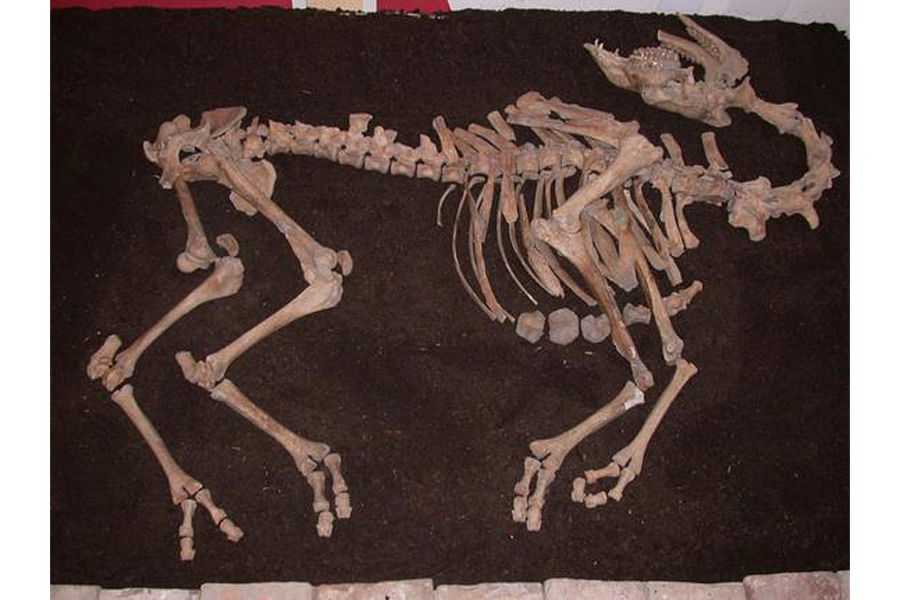What was this camel doing in 17th-century Austria?
Loading...
The skeleton of a camel that lived in the 17th century during the second Ottoman-Habsburg war has been discovered in a refuse pit in Austria.
The animal would have been somewhat of an "alien" along the Danube River in Tulln, Austria, the researchers said, calling it a "sunken ship in the desert."
"Camels are alien species in Europe and Austria, [and] the town of Tulln is closely situated to the large river/stream of the Danube," said Alfred Galik, a researcher at the University of Veterinary Medicine Vienna and one of the scientists who worked on the study detailing the discovery. The "sunken ship" phrase "should bring together this buried/sunken ship of the desert — with Tulln and the Danube a place where no camels naturally appear," Galik told Live Science in an email.
And rather than a beast of burden, this camel was likely a valuable riding animal, as the researchers found no clear signs of arthritis on the camel's bones. Rather, symmetrical marks on the shoulder blades and parts of the humerus bones likely resulted from the stress of a rider getting on and off of the camel. [See Images of an Ancient Camel Discovered in the High Arctic]
The camel also had unusual parents: It was born to a Bactrian camel (two-hump) dad and a dromedary (one-hump) mom, the researchers found after looking at the bones and analyzing the camel's DNA. The cross between the one-hump dromedary and the two-hump Bactrian resulted in a camel with one large hump, Galik said.
"Such crossbreeding was not unusual at the time," Galik said in a statement. "Hybrids were easier to handle, more enduring and larger than their parents. These animals were especially suited for military use."
As for how the camel got to Tulln, the researchers speculated that perhaps it came from the Ottoman army when Tulln was being attacked, Galik said.
"That means the cadaver was not butchered, and the flesh was not used — what remains as an untypical behavior, especially in times of war," Galik said. The Tulln inhabitants may not have wanted to eat the flesh of the camel because it was such an "alien animal," he added.
The camel — whose remains were found in a natural "postdeath" position, with its neck bent backward and its legs pulled up toward its body — was an adult male, older than 7 years when it died, the researchers found.
The research is detailed online today (April 1) in the journal PLOS ONE.
Follow Jeanna Bryner on Twitter and Google+. Follow us @livescience, Facebook & Google+. Original article on LiveScience.
- Image Gallery: 25 Amazing Ancient Beasts
- Beasts of Burden: Amazing Horse Photos
- Album: The World's Biggest Beasts
Copyright 2015 LiveScience, a Purch company. All rights reserved. This material may not be published, broadcast, rewritten or redistributed.





